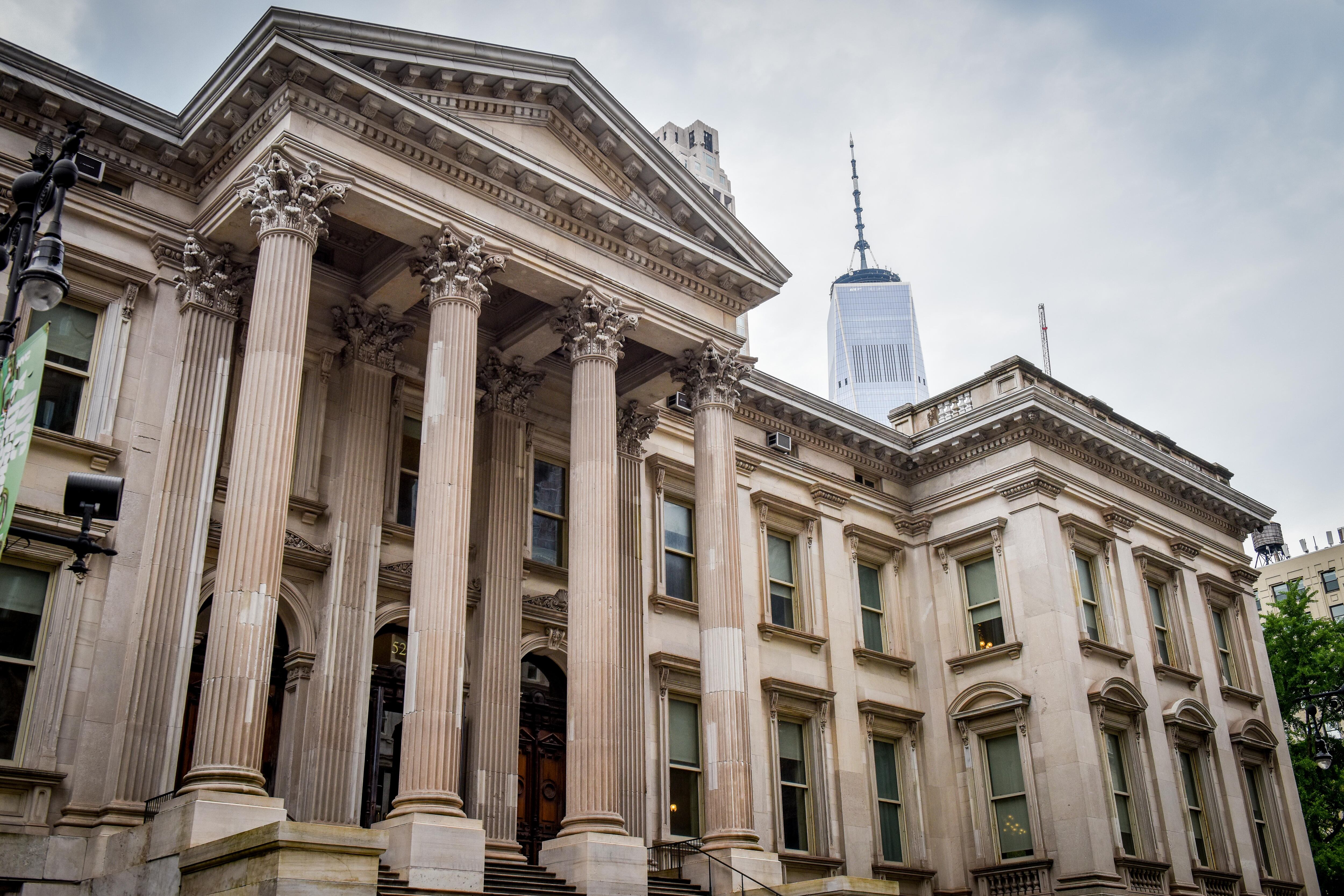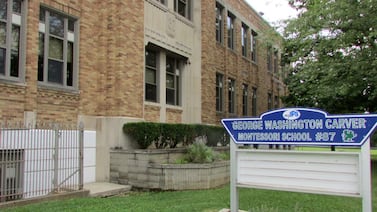Lawmakers are racing to pass a budget for next fiscal year as New York City reels from the coronavirus pandemic and protests against police brutality, leaving big questions about school funding, youth services, and school safety.
Next year’s financial plan will be unlike any budget Mayor Bill de Blasio has overseen since taking office in 2014. As residents quarantined and COVID-19 left some 20,000 people dead, the city is projected to see a $9 billion revenue shortfall and still could face further cuts from the state.
“It’s an incredibly difficult budget because we’re in the middle of such a crisis wrapped in crisis,” de Blasio said during a press conference on Monday, “but everyone’s been working incessantly over the last few weeks.”
City Council must approve a budget by July 1. To do so, councilors and the mayor’s office negotiate a plan based on de Blasio’s proposal in April. That plan assumed a $7.4 billion revenue shortfall, a number that grew to $9 billion in the past month and could mean layoffs of city workers.
De Blasio has proposed cutting nearly $642 million from the education department next fiscal year. Much of the slashing would fall on classroom instruction, according to an analysis by the Independent Budget Office.
Students, educators, and elected officials have demanded the city avoid slashing money for city schools by severing certain contracts, finding deeper cuts at the central office, or even asking the state to tax the ultra-wealthy. Additionally, advocates have called to shift money from the police department’s budget over to education — a demand that gained strength this month alongside nationwide protests against racist policing.
Separately, tens of thousands of families and hundreds of youth service providers are eagerly awaiting news about whether the city will reinstate, in some form, summer day camps and a youth jobs program.
Here are four key education issues we’re watching as the city hurtles toward its budget deadline.
School budgets are taking a hit — but how much?
De Blasio’s budget proposal would shrink the education department’s budget by 3%, driven largely by a hiring freeze, programmatic cuts, and $100 million in cuts to Fair Student Funding. Those funds, which represent the largest chunk of individual school budgets, go toward instruction and are based on a formula that sends more money to high-need schools. Another $40 million would be cut from a range of school-level services, including social workers, restorative justice programs, and other programming for students with disabilities and English learners.
Education officials recently told principals to expect a 3% cut to their individual budgets. That represents an average cut across all schools, and the department is devising a way to slash “equitably” to lessen the blow for the most vulnerable school communities, a department spokesperson said. Officials did not have further details.
Adding to that uncertainty, schools and other agencies could face cuts even after the budget passes if the city’s economic recovery is worse than expected, or if the state decides to claw back money from cities.
Schools typically have their preliminary budgets by the end of May, but have yet to receive them. So planning for next year feels more like guesswork.
At Castle Bridge School in Washington Heights, a 3% cut would equal about $100,000, said Principal Julie Zuckerman. She may need to cut professional development, staff coaches, or after-school programming.
Zuckerman hopes the delay means elected officials “had to go back to the drawing board” amid criticism of the steep cuts facing schools.
“Do I know what’s happening? No,” Zuckerman said. “I’m choosing to, at this point, take it in an optimistic light.”
Others are frustrated as they try to plan for a school year that could involve staggered schedules, many teachers working from home, and large supplies of masks and hand sanitizer. Jose Jimenez, principal of P.S. 290Q in Queens, said it’s “insane” not having his budget as school leaders brace for possible staffing cuts and the elimination of certain programs, such as after-school activities.
“If we’re gonna be real about what the next school year means to our students, it’s a time to invest, and so I’m just concerned that we’re going into a complacency mode,” Jimenez said. “I think people need to speak up and say education is not one of those things that you can just easily cut.”
22,000 possible pink slips, but it’s unclear how many could be for teachers
The city is digging for $1 billion in savings from the municipal workforce, or else face layoffs of 22,000 public employees, de Blasio said Wednesday.
“We are running out of options here,” he said at a press conference. “Unfortunately now we have to talk about the last resort. The last resort would be layoffs and furloughs.”
The mayor is hoping to negotiate concessions from labor unions to stave off job losses, saying it’s “the only way we can close this budget gap.” He did not mention how this would directly affect the education department, which employs some 150,000 people. But with the clock ticking on the budget deadline, de Blasio said positions may have to be slashed from “literally every single agency.”
Any job cuts would be slated to take place in the fall, he said, while maintaining “the hope and the prayer,” that more federal stimulus money may get approved or the state would allow the city to borrow money to ultimately avoid issuing pink slips.
The Citizen’s Budget Commission — a nonprofit, nonpartisan watchdog organization — has suggested the city can avoid layoffs and cut costs simply through attrition and renegotiating some benefits such as health insurance costs for public employees. The Commission also recommends eliminating the Absent Teacher Reserve, a controversial pool of educators who remain on the city payroll but do not have permanent positions because they face disciplinary action, or because their schools closed or lost enrollment.
Michael Mulgrew, president of the New York City teachers union, gave a sarcastic retort to the mayor’s dire warning.
“There’s a ‘thank you for your service’ during the pandemic — a layoff notice for thousands of city workers who created an unparalleled virtual education program, staffed the clinics, drove the ambulances and kept other city services going,” Mulgrew said in a statement.
De Blasio vows to move NYPD money to youth programs, but details are scarce
In the aftermath of massive protests against the killing of George Floyd at the hands of the Minneapolis police, Mayor Bill de Blasio has vowed to reduce funding for the police department to help finance youth programming.
But the details are murky and it remains unclear whether that will include significant changes to the school safety division, which deploys over 5,000 unarmed school officers across the city’s public schools.
The mayor’s current budget proposal includes a 1.3% increase to the school safety division next fiscal year for a total of $427 million. That represents a 38% jump since de Blasio took office. A spokesperson for de Blasio did not answer questions about whether the school safety division will be subject to cuts.
Activists and some city lawmakers have also called for transferring supervision of school safety from the police department, which took control from the education department in 1998 under Mayor Rudy Giuliani. The police commissioner has said he is open to the idea but de Blasio has been publicly opposed.
“I want to see reprioritization to young people for sure, and I want to make sure we stay safe,” de Blasio said. “Gotta strike the right balance.”
Grim summer ahead as youth programming remains uncertain
The mayor proposed cancelling the Summer Youth Employment Program, or SYEP, over virus and budget concerns, saving the city $124 million typically spent to match about 74,500 young people with jobs and paychecks. He also proposed cutting subsidized day camps, which serve about 100,000 children, predominantly from low-income families.
But following intense public outcry, city officials said they will find a virtual alternative for the jobs program and would shift more police department money to youth services. They have remained silent on specific details. Additionally, an expected $23 million contribution from the state for the jobs program is also up in the air.
Youth and families, who rely on the jobs program for extra cash and experience and the day camps for childcare, remain in limbo, as New York City businesses begin to reopen. (The Cuomo administration has OK’ed in-person camps, but they must follow a list of social distancing and hygiene rules.)
“Thousands of students around the city look at SYEP as an opportunity to stand up for themselves and begin their career, and that’s how most students fund their family,” said high school senior Abdullah Mazmudar during a press conference Tuesday held by student advocacy group Teens Take Charge.
Providers of these programs — many of whom have prepared for various scenarios – have laid off workers or plan to. They are uncertain how they’ll scale up quickly, including rehiring employees to run programs, if funding does come through at the last minute.
Known unknowns
The city’s final spending plan will “almost certainly” change after July 1 because of three unknowns: potential state cuts, the city’s economic recovery, and potential help from the federal government, said George Sweeting, deputy director of the city’s Independent Budget Office.
“So as the City Council and mayor will do something to get some budget in place, it will probably include a lot of unknowns,” Sweeting said. “It’s only as those questions get answered during the course of the next 12 months we’ll know the final number for how much the city spends on schools and everything else the city does.”
Another unknown: A second wave of the coronavirus in the fall could further skew projections for how fast the economy will recover, Sweeting said.
Gov. Andrew Cuomo, facing his own $10 billion shortfall, has the power this year to periodically cut funding for localities if state revenue falls slightly below projections — something that has already happened. Without extra help from Washington, D.C., which has already provided a round of relief for states, Cuomo has warned of cuts up to 20% for school funding across the state. That could mean up to $2.3 billion lost for New York City schools alone.
It’s possible the city finds itself able to spend more money than expected if the economy improves more rapidly, or if there’s a huge influx of federal dollars. But a new stimulus bill is stuck in Congress, so it’s unclear if and when more money could come.
These “wild cards” mean that school leaders have little to prepare with right now, Sweeting said.
“I think they should expect a lot of uncertainty,” Sweeting said.







